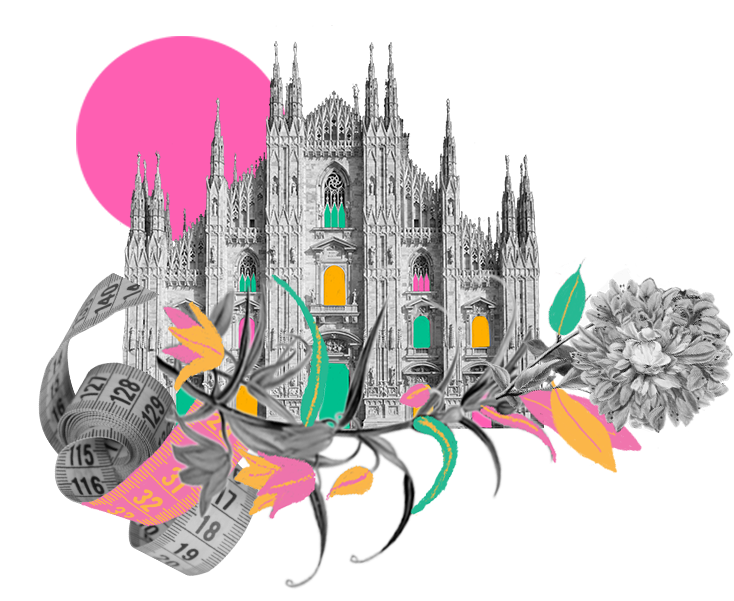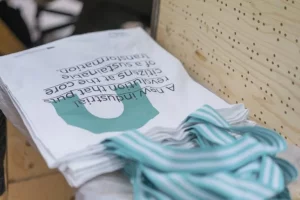BLOG
Designing circularity into the fashion industry
Designing circularity into the fashion industry
Designing circularity into the fashion industry
Manifattura Milano
Words by Metabolic, NEMA and Comune di Milano
ABOUT THE PILOT AREA
Pilot area: Ex-Ansaldo Area
The CENTRINNO pilot team in Milan works on creating an active circular manufacturing community for design, fashion and creatives in the textile sector. Milan’s mapping journey started local – with a detailed inventory of the actors and their needs across the city.
Building Circular Bridges in Fashion Capital Milan
Before the nineties of the 20th century, the greater Milan metropolitan region was an area rich in large manufacturing and production plants[1]. Textile and leather factories alongside glass and chemical manufacturers shaped the industrial landscape of the city. Milan was also a hotspot of engineering, metallurgical and electrical industries that clustered in the city’s north-west[1]. However, due to the pressures of industry decentralization away from major city areas and globalization delivering strong competition from developing countries, the nineties brought about a change in the city’s productive landscape. Large factories gave way to an intricate web of small-to-medium sized enterprises. Among these smaller companies, in the early 2000s, crafts still played an important role in the Milan economy[1]. Indeed, around 29% of all small companies were crafts-oriented. Savona-Tortona, another former industrial hub of the city, serves as a good example of how the composition and industrial activities changed over the years.
The evolution of industries in Porta Genova
From the depths of the archives of Milan’s building register, volunteers of the neighbourhood have uncovered decades of changing business occupanies around the Milano Porta Genova and Foppette neighborhoods. This local knowledge allowed us to map the evolution of productive industries since the late 19th century. Discover the interactive map here!

Together with this shift from mass-scale production towards more diversified production and services economies, came the fashion industry. Until today, the city of Milan and its wider Lombardy region have successfully capitalized on the area’s creative assets and branded the area as a globally known hotspot for fashion and design[2]. Thus, while most of the physical textile factories have left the city boundaries, Milan managed to retain and attract the largest fashion brands to settle their storefronts and headquarters within the city. Home to internationally renowned fashion shows and events, Milan’s fashion industry remains a thriving one. Yet, the well-known dark side of 21st century fashion industries goes hand in hand with Milan’s success. With an estimated production of 80 billion garments per year, the global fashion industry is not far from the most wasteful, resource-intensive and environmentally harming sectors of all. In the EU alone “approximately 2.2 million tons of textile municipal solid waste was generated in 2018” [3].
Within Milan alone, over 4,000 tonnes of textile waste are separately collected by the city’s three largest textile collectors each year. Bear in mind, these numbers do not yet include textile waste from businesses and industries! It also does not show the hidden textile waste that is currently incinerated within residual and unsorted municipal waste streams.
Mapping waste collectors in Milan
Within the city area of Milan, there are a number of waste collectors and processors. On the map we developed, they are indicated by location and relative size based on the amount of waste processed per plant. When we look at the different types of wastes being processed, it becomes clear that textile waste does not constitute a significant part of the total waste flows in Milan. Check out the interactive map here!
Making Milan’s fashion industry future-proof therefore also means becoming a flagship for less wasteful and more circular textile production and waste management. In Milan, the large volumes of textile waste could become a valuable input stream for makers and creators to drive forth innovation into circular design. Within CENTRINNO, we have set on a journey to explore the potential of local textile waste streams to be reused by the powerful creative ecosystem of textile industries.
Reuse to prevent waste
A first step towards finding opportunities for the reuse and prevention of waste is mapping those who have access to resources and skills, those who produce reusable textile waste and those who could reuse waste streams in their production. This ecosystem of stakeholders forms the heart of Milan’s local fashion sector that could hold a lot of potential to drive forth a circular economy in the city. The cultural center BASE and former mechanical industry, located in Savona-Tortona, is where we hope this ecosystem can find a platform for exchange and collaboration.
The circular manufacturing map “Manifattura Milano” also stems from a broader reasoning around the theme of circular economy and how this can foster new perspectives for the shared creation of collaborative economies on a neighborhood scale; not individual circular products placed in circuits that are still often too ‘linear’, or individual enterprises aiming at an internal, solitary and competitive circularity, but rather networks of multi-actor collaborations that through mutual exchange, sharing of resources and skills create a value that is even more social than economical. A circular economy, where sharing is the starting point and strength to create diverse cities capable of satisfying their own needs internally.
In order to represent this ecosystem, we firstly identify the key players – imagining a transversal involvement that would intercept both companies and the third sector, research centers and public administration – and to assign them weights and categories within dynamics that at different levels touch the public, private and social spheres.

Manifattura Milano is the platform dedicated to craftsmanship, urban manufacturing and the circular economy in the fashion and design sectors of the city. The map is a work in progress and shows the stakeholders engaged in the project, contributing to the activities and also showing their virtuous relations in activating circular practices. Check out the interactive map here!
First circular bridges
It took us more than two years of planning, with meetings, events and interviews to understand the real needs, criticalities and opportunities of our Urban Ecosystem in the creation of circular flows of urban production.
And our work starts to show true results! It allowed us to create the Manifattura Milano meta-brand – a first showcase of how we can reuse textile waste from the hospitality sector to teach and learn about circular production. Manifattura Milano is seen as a story, emphasizing the process of dialogue and co-design of the manufactured product. It represents the values of the producers who are part of it, and above all makes it possible to increase demand and visibility for products born in this context.
The first product within the Manifattura Milano project was a tote bag used during? the Consortium meeting of the Centrinno project held in Barcelona at the end of May 2022. Various actors from the Milan ecosystem were involved in the creation of the shopper bag made out of old cotton hotel sheets. Explore our map below who was involved in this project!
Image 1. Manifattura Milano Tote Bag. Source: CENTRINNO
Discover the Meta-Brand of Manifattura Milano
How can we bring together the large and small businesses of Milan’s manufacturing ecosystem to build circular bridges between each other? Can we harness the power of small producers to use large-scale waste streams for new products?
These are questions we try to answer in the meta-brand project. The meta-brand project is an experiment to test the possibility of local product design and manufacturing on a small market scale, using fractions of materials often abandoned to the recycling stream.
By giving a common branding and public image to circularly manufactured products, we hope to help activate a local demand for circular products made in Milan.
Explore out first product – a tote bag from hotel bedsheets.
Next Steps
Within the first version of the map, it is possible to view the entire ecosystem or part of it by making a selection in the main menu based on the type of actor (Craftsman/Producer, Institution, Laboratory, Service) and also interweaving it on the basis of the activities carried out by choosing them in the drop-down menu (Design, Education and Training, Consultancy, Makers&FabLab, Repair, Research, Digital Manufacturing, Local Production, Communication, Networking).
If you carry out an activity in synergy with the described features and would like to be part of the map, get in touch!
Furthermore, within the Manifattura Milano project new projects are planned that would go in the direction of creating more “circular bridges”. The aim is not only to create connections between raw material companies and processors, but to become possible accelerators of urban economies ourselves.
Check out the article with the interactive maps on the cartography site!

































































































